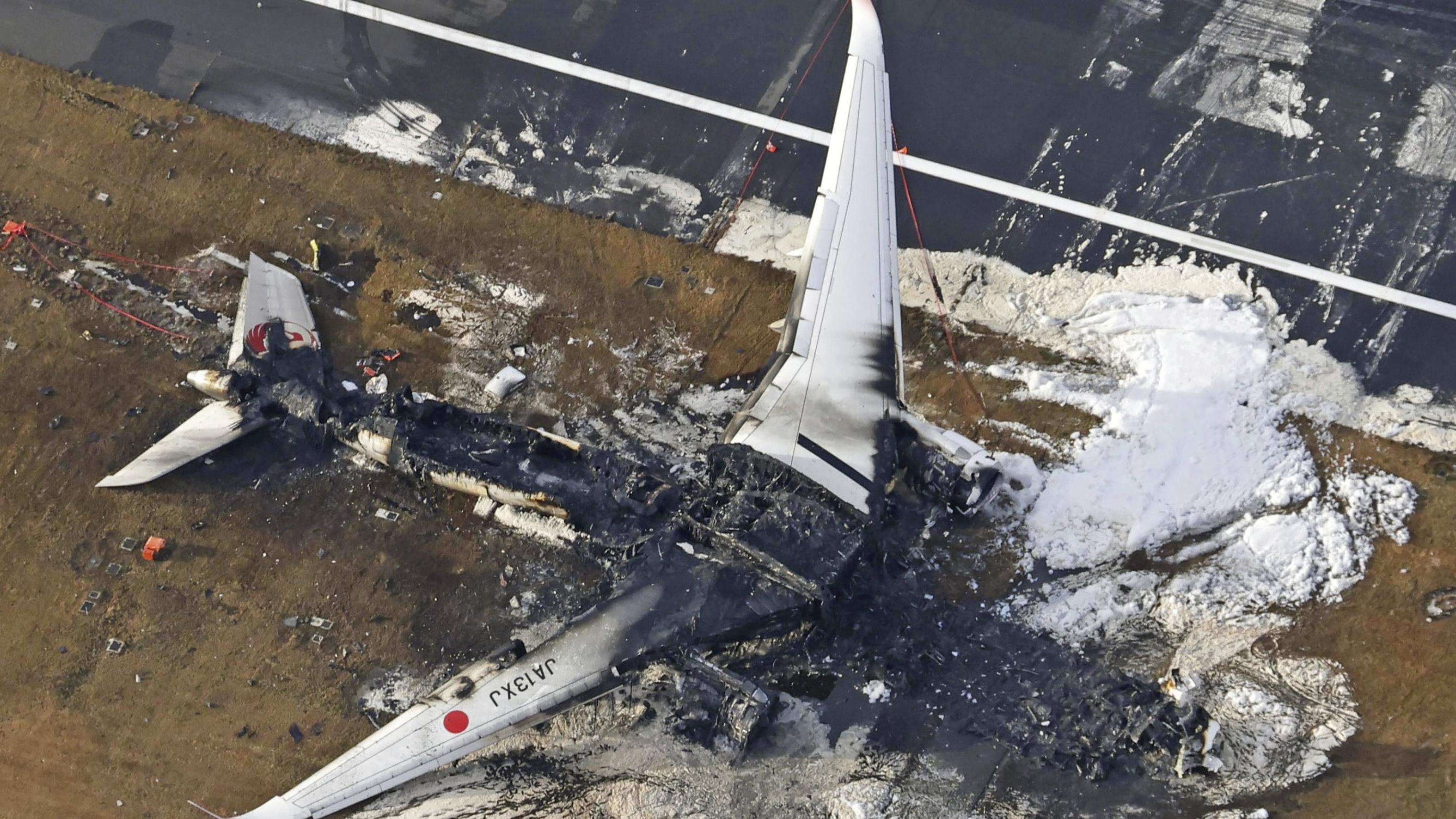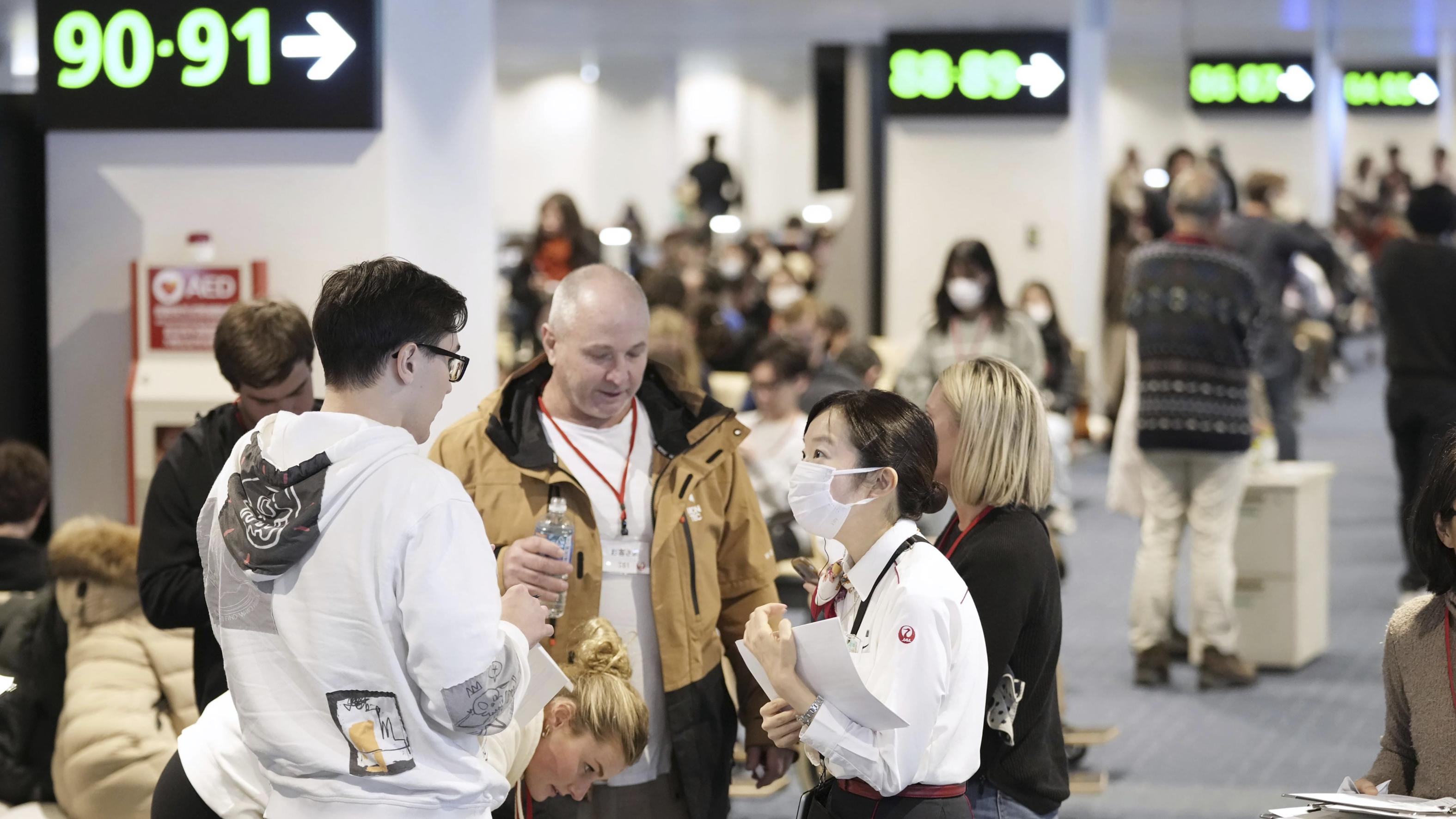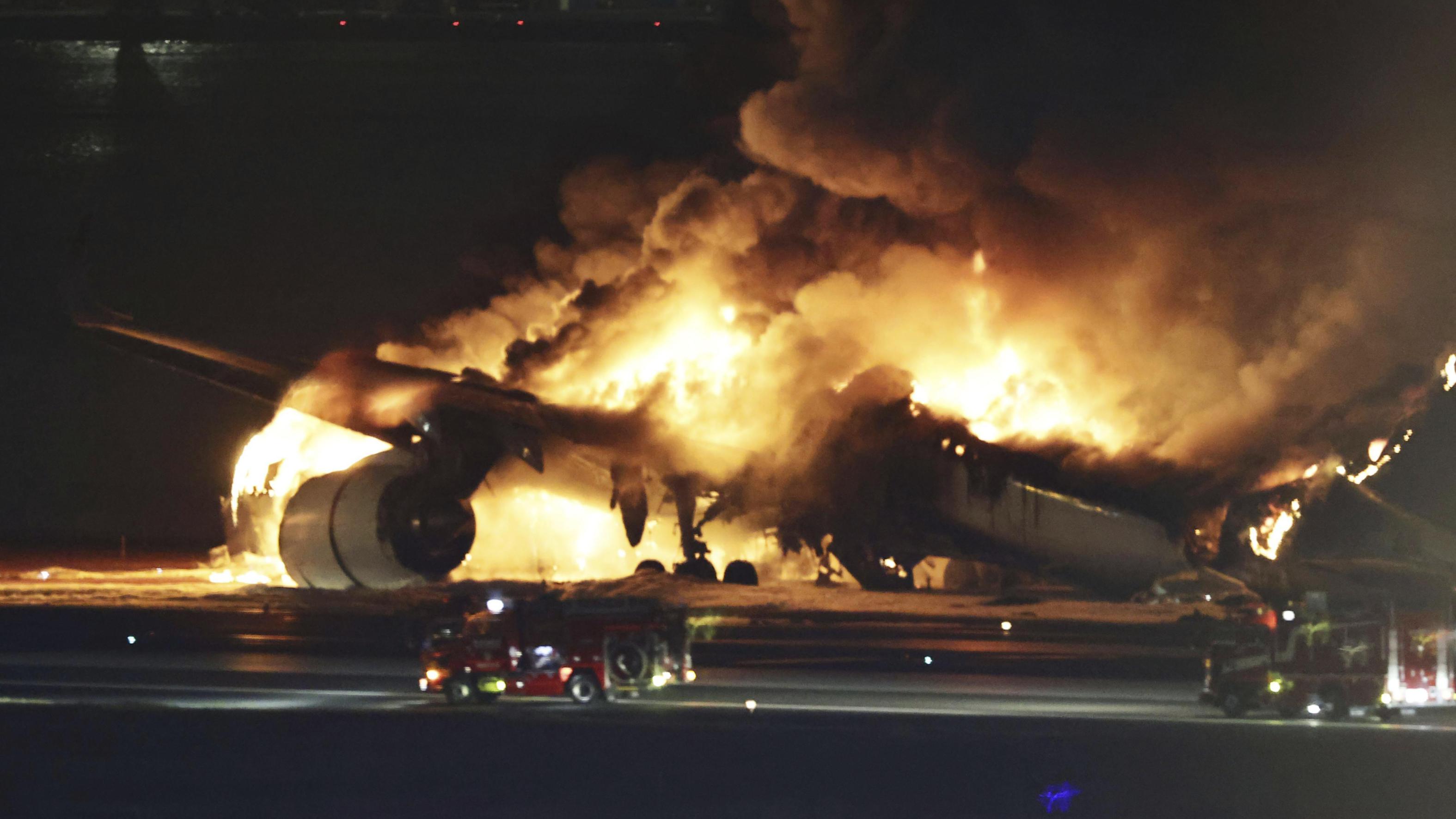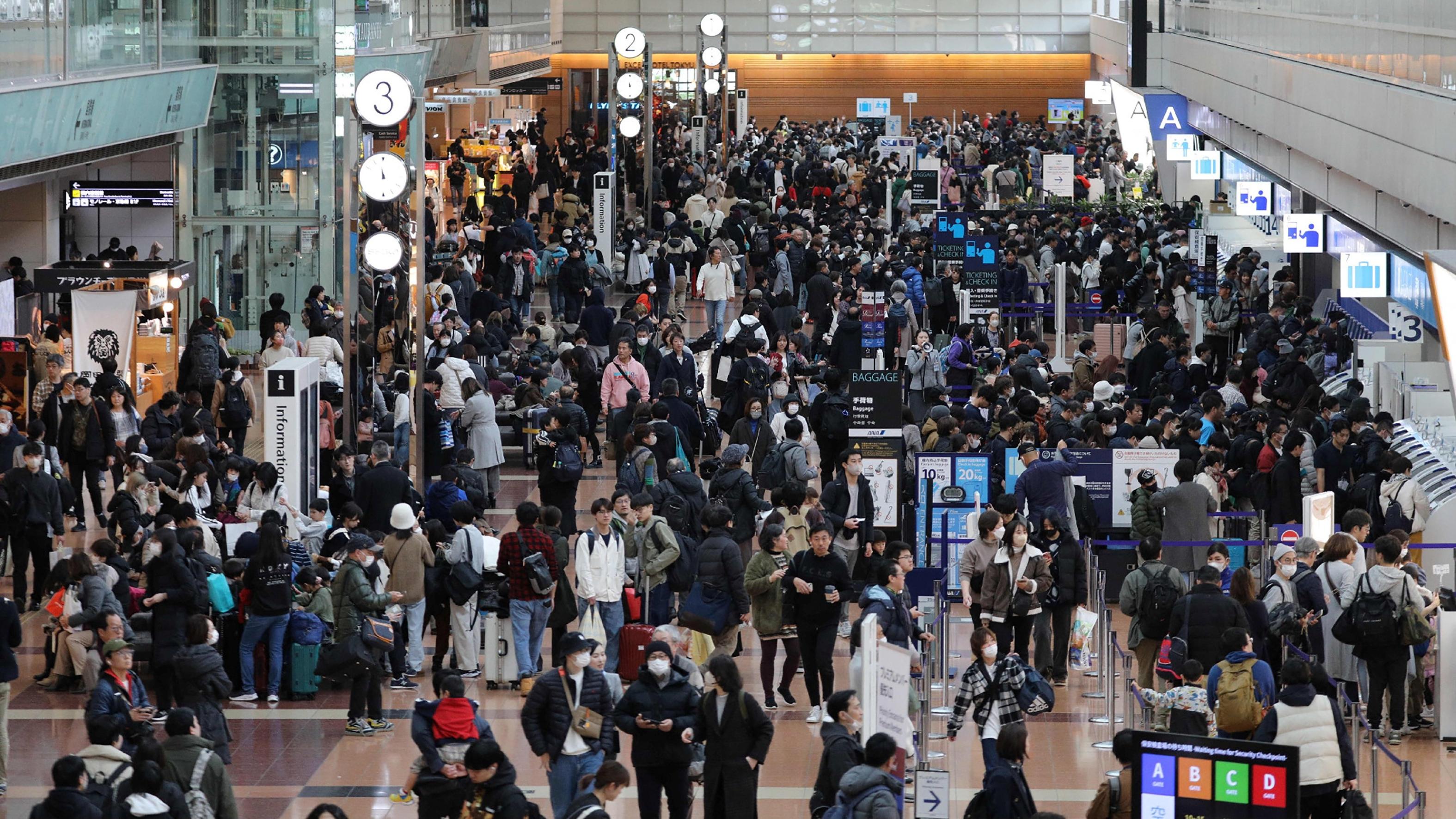 This aerial photo show the burn-out Japan Airlines plane at Haneda airport on Wednesday, Jan 3, 2024, in Tokyo, Japan. (PHOTO / AP)
This aerial photo show the burn-out Japan Airlines plane at Haneda airport on Wednesday, Jan 3, 2024, in Tokyo, Japan. (PHOTO / AP)
TOKYO — From the moment a Japan Airlines passenger jet collided with a smaller plane on a runway in Tokyo on Tuesday, it took crew 18 minutes to get all 367 travellers off the plane and safely accounted for.
Reconstructing the scene based on crew accounts, officials at Japan's second-biggest airline on Wednesday said crew followed emergency procedures in textbook fashion, starting with the first rule: panic control.
Emergency protocol stipulates that crew must have permission from the cockpit to open any emergency exits. The captain stood near the two exits up front and gave the go-ahead for evacuation
As soon as the Airbus A350 wide-body jet came to a stop, cabin attendants called out to passengers to remain calm as bright-orange flames engulfed large areas of the plane and smoke quickly filled the cabin.
READ MORE: Five dead after JAL airliner crashes into quake aid plane in Tokyo
The crew quickly sized up the situation with visual checks of the exterior and decided which of the eight emergency exits were safe for use. They then used short, direct commands, as they are trained to do, such as "leave your luggage" and "not this door", officials said.
Some passengers interviewed at the airport late on Tuesday credited the swift evacuation drill with saving their lives.
"I heard an explosion about 10 minutes after everyone and I got off the plane," said 28-year-old Tsubasa Sawada. "I can only say it was a miracle, we could have died if we were late."
Evacuation chutes
Emergency protocol stipulates that crew must have permission from the cockpit to open any emergency exits. The captain stood near the two exits up front and gave the go-ahead for evacuation.
But the third safe exit in the rear could not be cleared because the public announcement and intercom systems were no longer functioning. The cabin crew then made the correct decision to open the door anyway, allowing passengers to slide down the evacuation chutes, JAL said.
All cabin attendants get trained once a year on evacuation procedures, simulating various scenarios such as what to do when they cannot communicate with the cockpit, officials said.
After ensuring that all passengers had slid safely down the three slides, the crew and pilots completed the evacuation at 6:05 p.m. (0905 GMT), or 18 minutes after landing.
JAL officials did not know how long the process took from the time the aircraft came to a complete stop.
90 seconds
The crash is the first significant accident involving the Airbus A350, Europe's premier long-haul jet, in service since 2015. It is also the first time a passenger plane built mainly from lightweight carbon composites has burned totally.
The A350-900 was certified for a full load of up to 440 passengers to be evacuated within 90 seconds with only half of the exits usable.
 A Japan Airlines worker talks with the passengers who evacuated from a plane fire at the Haneda airport on Tuesday, Jan 2, 2024 in Tokyo, Japan. (PHOTO / AP)
A Japan Airlines worker talks with the passengers who evacuated from a plane fire at the Haneda airport on Tuesday, Jan 2, 2024 in Tokyo, Japan. (PHOTO / AP)
 A Japan Airlines plane is on fire on the runway of Haneda airport on Tuesday, Jan 2, 2024 in Tokyo, Japan. (PHOTO / AP)
A Japan Airlines plane is on fire on the runway of Haneda airport on Tuesday, Jan 2, 2024 in Tokyo, Japan. (PHOTO / AP)
 Japan's Minister of Finance Shun'ichi Suzuki (center) prays with guests for the victims of the earthquake in Ishikawa prefecture and Haneda airport accident during the ceremony on the first trading day of the new year at the Tokyo Stock Exchange in Tokyo on Jan 4, 2024. (PHOTO / AFP)
Japan's Minister of Finance Shun'ichi Suzuki (center) prays with guests for the victims of the earthquake in Ishikawa prefecture and Haneda airport accident during the ceremony on the first trading day of the new year at the Tokyo Stock Exchange in Tokyo on Jan 4, 2024. (PHOTO / AFP)
 Travelers crowd the check-in area at terminal 2 at Tokyo International Airport at Haneda on Jan 3, 2024, as flight delays on one of the busiest travel days of the year following the New Year's Day holidays were made worse due to the collision on the tarmac the night before between a coast guard plane and a Japan Airlines (JAL) passenger jet, shutting down one of the main runways. (PHOTO / AFP)
Travelers crowd the check-in area at terminal 2 at Tokyo International Airport at Haneda on Jan 3, 2024, as flight delays on one of the busiest travel days of the year following the New Year's Day holidays were made worse due to the collision on the tarmac the night before between a coast guard plane and a Japan Airlines (JAL) passenger jet, shutting down one of the main runways. (PHOTO / AFP)
It was not immediately clear what portion of the 18-minute operation was spent physically getting passengers down slides, but safety experts said interviews with passengers would be examined worldwide to help shape future evacuation procedures.
"The JAL cabin crew should be highly commended for their textbook evacuation," an Airbus spokesperson said.
JAL officials said the crew on flight 516, from near the northern Japanese city of Sapporo to Tokyo's Haneda airport, had followed appropriate procedures, but also praised the passengers for the orderly exit from a full flight that included eight pre-school children.
READ MORE: Runway safety concerns in focus as Japan probes Tokyo crash
Aviation safety agencies have warned for years that pausing to collect carry-on baggage risks lives during an evacuation.
"I'm sure all of you have the experience of being asked on flights not to take your carry-on items in the case of an emergency evacuation," Noriyuki Aoki, senior vice president of general affairs, said at a briefing for reporters.
"This was followed to the tee, including with the cooperation of the passengers, and we believe that led to the swift evacuation."


